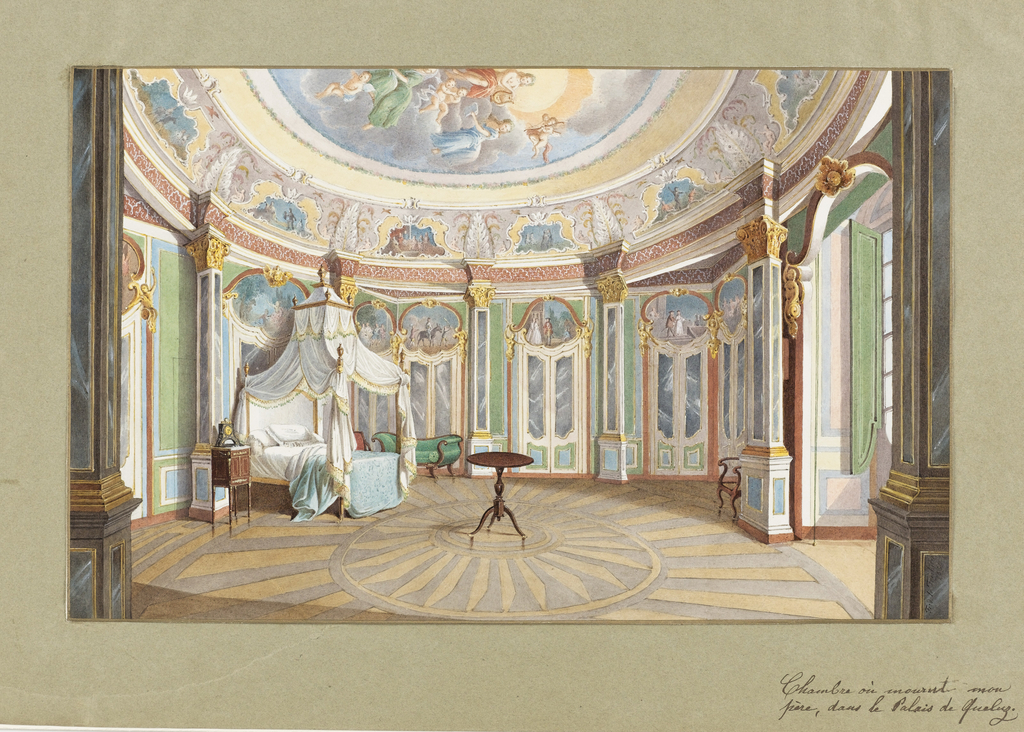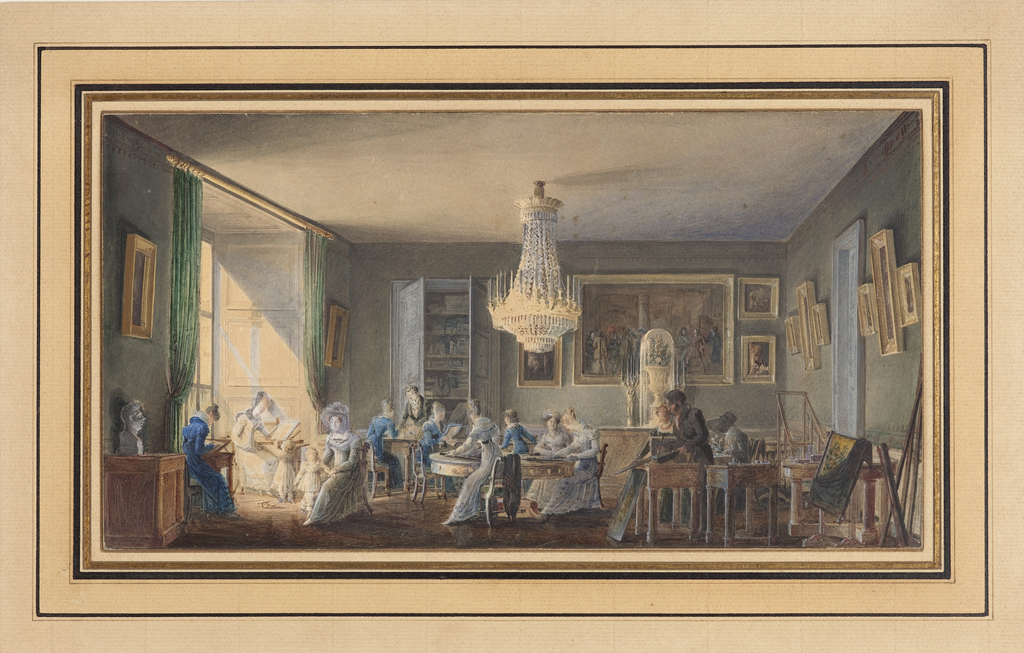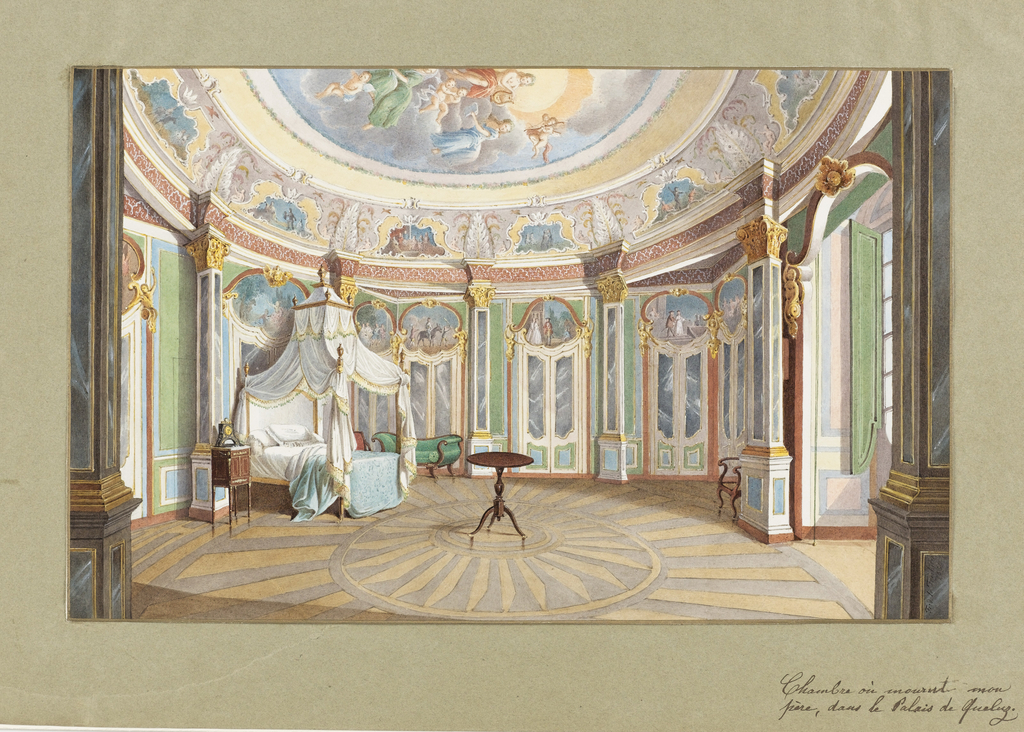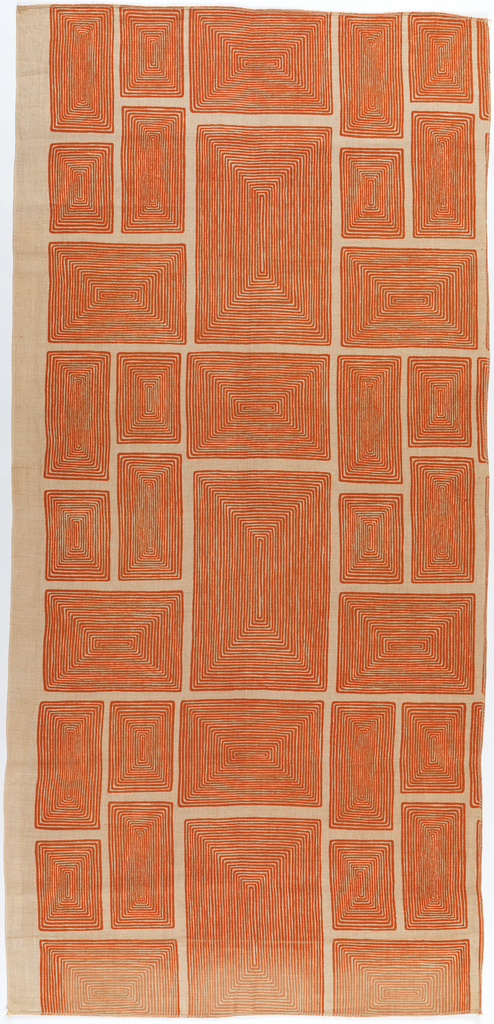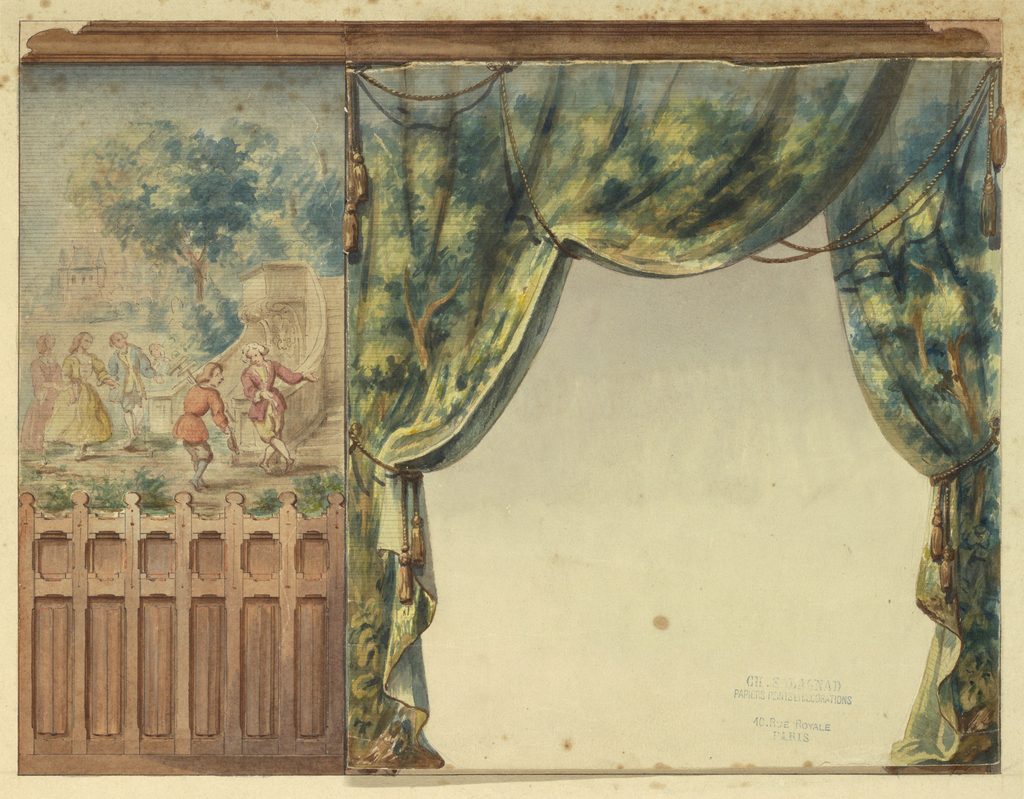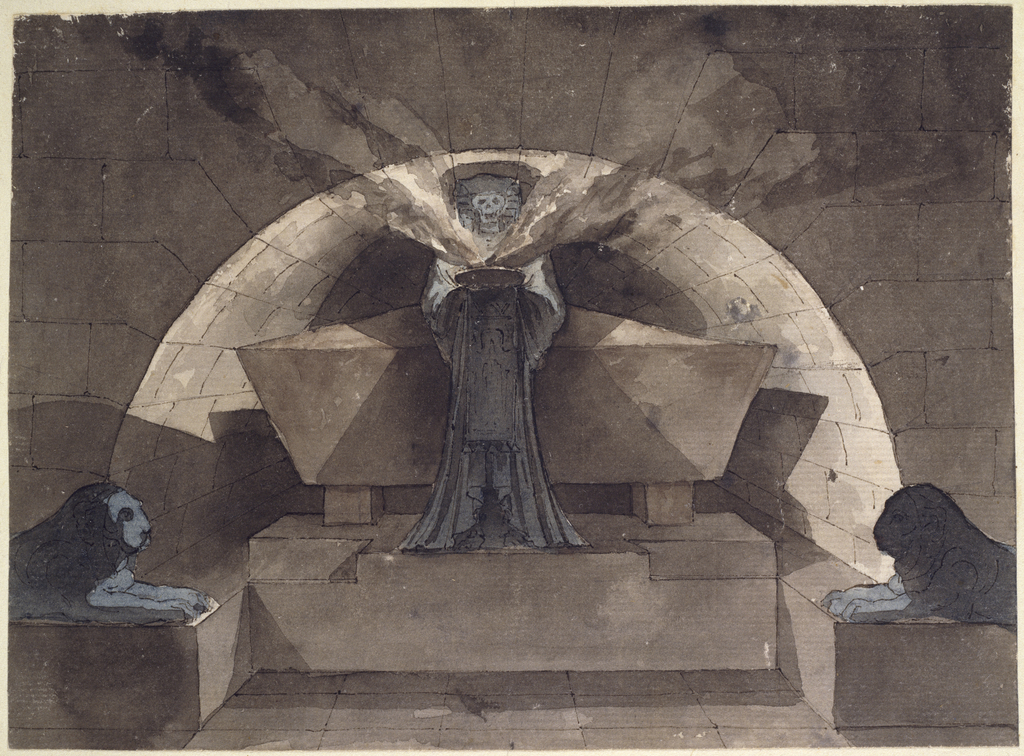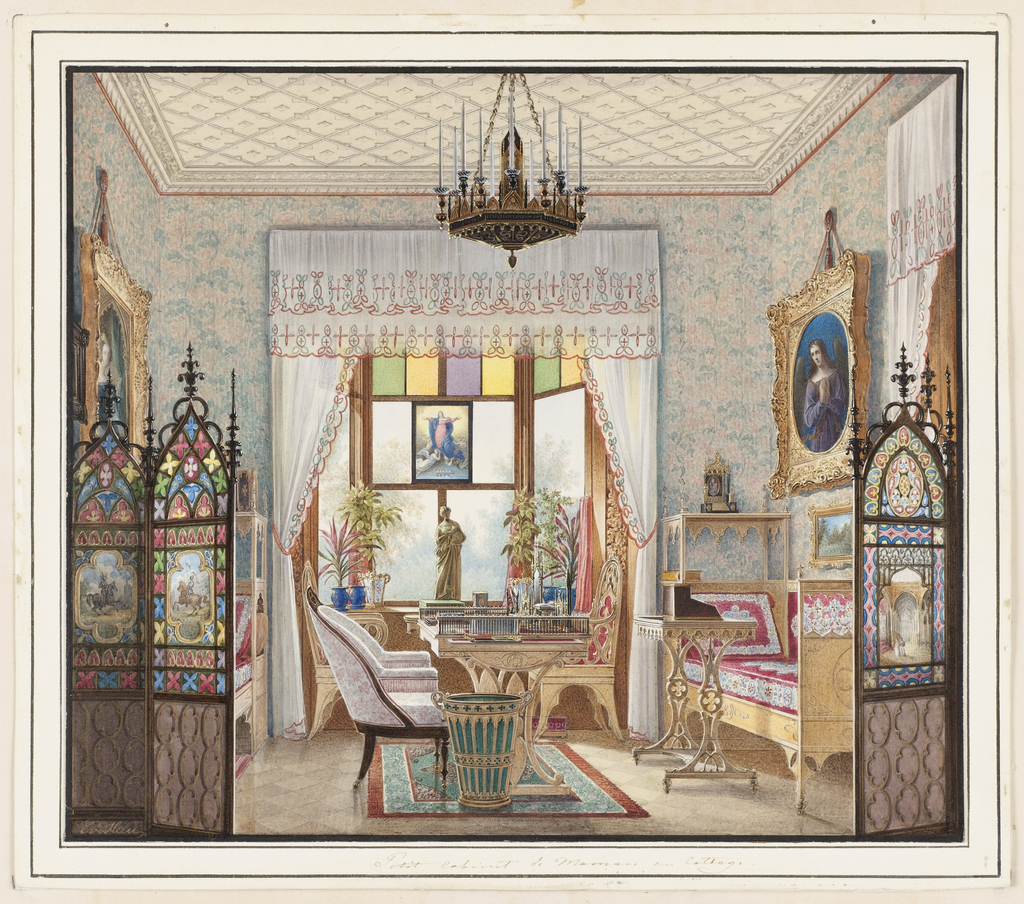This Object of the Day celebrates one of many treasured objects given by Clare and Eugene V. Thaw to Cooper Hewitt, Smithsonian Design Museum. It is republished here in memory of Eugene V. Thaw. Click on this link to read more about the Thaws and their gifts to Cooper Hewitt. This polychrome interior hides architectural, visual,...
This Object of the Day celebrates one of many treasured objects given by Clare and Eugene V. Thaw to Cooper Hewitt, Smithsonian Design Museum. It is republished here in memory of Eugene V. Thaw. Click on this link to read more about the Thaws and their gifts to Cooper Hewitt. Heads down with pencils and brushes...
This polychrome interior hides architectural, visual, and historic secrets. The drawing depicts the bedroom of King Pedro IV in the Palace of Queluz in the municipality of Sintra, just west of Lisbon. The Palace was originally constructed in the eighteenth century under King Pedro III as a summer home. It remained within the Portuguese royal family...
Starry Indigo embodies two vital Japanese textile traditions which derive from the kimono: indigo dyeing which can achieve the darkest and lightest of blues through repeated dipping in the dye vat, and woven silk accentuated by luxurious metallic coated washi thread (silver in Starry Indigo). The appearance of starlets twinkling in a midnight blue sky...
This printed textile, Campagna, by Angelo Testa epitomizes his distinct design vocabulary. Likely named after Testa’s friend, Paul Campagna, Testa designed it around 1950 for Knoll Associates. Campagna utilizes Testa’s preferred linear and geometric forms, commonly associated with his Bauhaus training. The hard edges of the concentric rectangles in this textile, however, have been softened...
Charles Salagnad made this drawing in 1872, during a phase of renovations at the now-famous Newport mansion, Château-sur-Mer. The house was built two decades earlier for the wealthy China trader William Shepard Wetmore (1801-1862). Wetmore’s newly married son, George Peabody Wetmore, commissioned one of Gilded Age society’s preferred architects, Richard Morris Hunt, to transform his late...
Heads down with pencils and brushes in hand, a group of elegantly dressed women are engrossed in the act of drawing. Meanwhile, two male instructors, conspicuous in their dark frock coats, observe their work. Yet these are not art students learning their trade in a master’s studio. Rather, this remarkably detailed watercolor by an unknown...
In this atmospheric drawing, the robed figure of Death holds a smoking brazier and presides over a tomb cast in a gray wash. Stark shadows describe the geometric forms of a massive sarcophagus and sepulchral niche. The simplicity of the somber interior evokes the proportions of Egyptian architecture, as well as that ancient culture’s fascination with death. Louis-Jean...
This charming gothic interior was the private study in the Cottage Palace, St. Petersburg, Russia, of Alexandra Feodorovna, wife of Nicholas I. Born Frederica Louise Charlotte Wilhelmina of Prussia, Charlotte, as she was known, was promised in a political alliance to Grand Duke Nicholas Pavlovich in 1814. They married three years later and by 1825...
